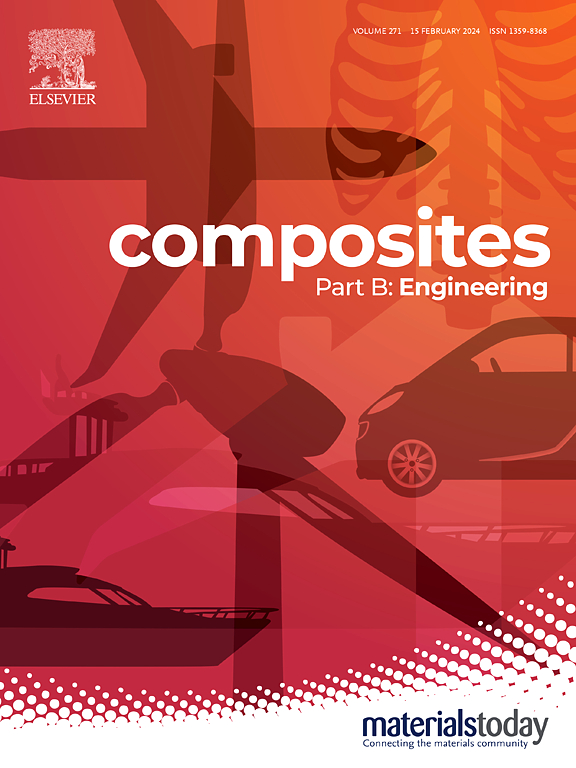Direct growth of hierarchical nickel tin cobalt sulfide thin film on Ni foam as a high-performance electrode for hybrid supercapacitor
IF 12.7
1区 材料科学
Q1 ENGINEERING, MULTIDISCIPLINARY
引用次数: 0
Abstract
This study unveils an innovative approach for fabricating high-performance Nickel–Tin–Cobalt sulfide (NTCS) on Ni foam (NF) substrates as a ternary sulfide, shifting the boundaries of supercapacitors (SCs) technology towards economic efficiency. The successive ionic layer adsorption and reaction (SILAR) technique is used to prepare a range of NTCS thin films, as battery like electrode, and the optimized NTCS3@NF electrode displayed exceptional results, overtaking all previously reported ternary sulfides. The NTCS3@NF electrode achieved an impressive specific capacity (Cs) of 1708 C/g at 5 A/g, with 100 % capacity retention and coulombic efficiency after 20,000 cycles. The superior performance of the introduced electrodes is attributed to the effective direct growth of thin film over an excellent conductive substrate and avoiding creating dead surface area by using polymer binders. The inherent connection between the prepared thin film and substrate decreases the overall resistance and facilitates electron transfer across the interface. Also, the thin film porosity helps in effective ion diffusion between the electrode/electrolyte interface. Moreover, the NTCS3@NF//Activated Carbon (AC)@NF hybrid supercapacitor device (HSC) delivered an outstanding energy density (ED) of 20 Wh/kg and a power density (PD) of 12,909 W/kg at 10 A/g, retaining 76 % capacity and 81.2 % coulombic efficiency even after 100,000 cycles, surpassing the performance of leading HSCs. These findings position NTCS as a potential material for next-generation supercapacitors and economical energy storage applications.

在泡沫镍上直接生长层次化镍锡钴硫化薄膜作为混合超级电容器的高性能电极
这项研究揭示了一种创新的方法,可以在Ni泡沫(NF)衬底上制造高性能的镍锡钴硫化物(NTCS)作为三元硫化物,将超级电容器(SCs)技术的界限转向经济效率。采用连续离子层吸附和反应(SILAR)技术制备了一系列NTCS薄膜,作为电池样电极,优化后的NTCS3@NF电极显示出优异的效果,超过了之前报道的所有三元硫化物。NTCS3@NF电极在5 A/g下获得了令人印象深刻的1708 C/g比容量(Cs),在20,000次循环后具有100%的容量保持和库仑效率。引入的电极的优越性能归因于薄膜在优良导电衬底上的有效直接生长,并通过使用聚合物粘合剂避免产生死表面积。所制备的薄膜和衬底之间的固有连接降低了总电阻并促进了电子在界面上的转移。此外,薄膜孔隙有助于在电极/电解质界面之间有效的离子扩散。此外,NTCS3@NF//活性炭(AC)@NF混合超级电容器装置(HSC)在10 a /g下提供了20 Wh/kg的能量密度(ED)和12909 W/kg的功率密度(PD),即使在10万次循环后仍保持76%的容量和81.2%的库仑效率,超过了领先的HSC性能。这些发现使NTCS成为下一代超级电容器和经济储能应用的潜在材料。
本文章由计算机程序翻译,如有差异,请以英文原文为准。
求助全文
约1分钟内获得全文
求助全文
来源期刊

Composites Part B: Engineering
工程技术-材料科学:复合
CiteScore
24.40
自引率
11.50%
发文量
784
审稿时长
21 days
期刊介绍:
Composites Part B: Engineering is a journal that publishes impactful research of high quality on composite materials. This research is supported by fundamental mechanics and materials science and engineering approaches. The targeted research can cover a wide range of length scales, ranging from nano to micro and meso, and even to the full product and structure level. The journal specifically focuses on engineering applications that involve high performance composites. These applications can range from low volume and high cost to high volume and low cost composite development.
The main goal of the journal is to provide a platform for the prompt publication of original and high quality research. The emphasis is on design, development, modeling, validation, and manufacturing of engineering details and concepts. The journal welcomes both basic research papers and proposals for review articles. Authors are encouraged to address challenges across various application areas. These areas include, but are not limited to, aerospace, automotive, and other surface transportation. The journal also covers energy-related applications, with a focus on renewable energy. Other application areas include infrastructure, off-shore and maritime projects, health care technology, and recreational products.
 求助内容:
求助内容: 应助结果提醒方式:
应助结果提醒方式:


